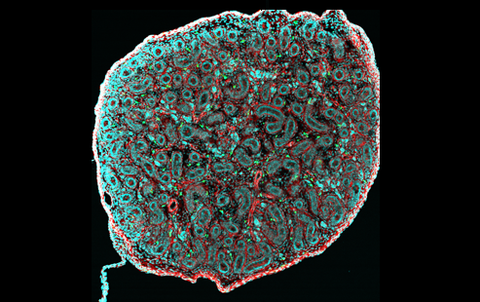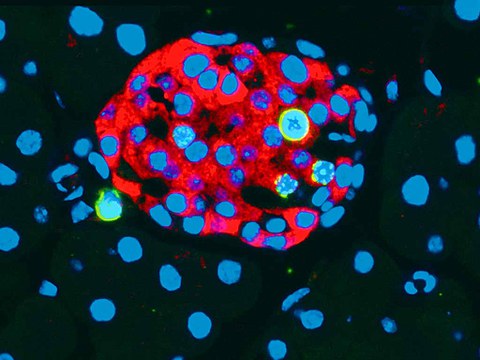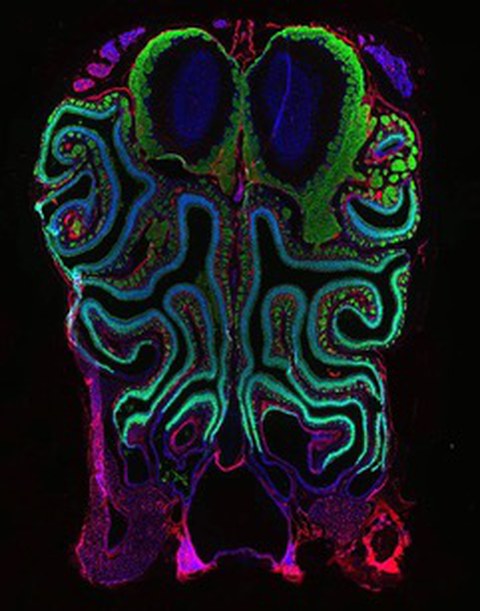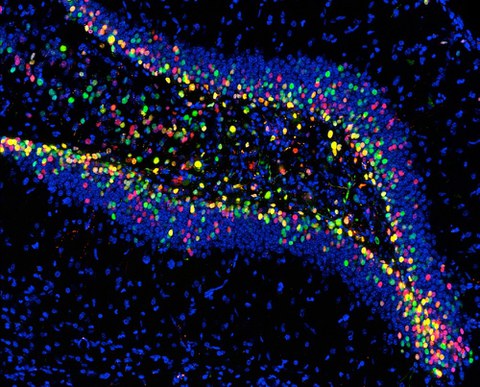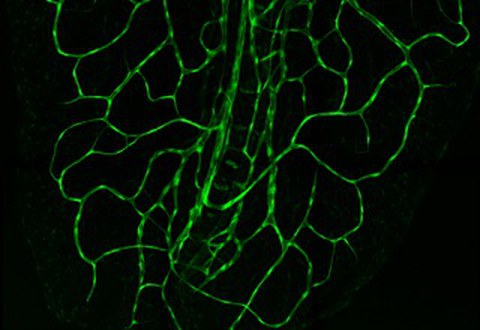Research Areas
CRTD scientists are focusing on the following four research areas:
A major motivation within the research field Immunology is to harness insights obtained in model-system based approaches to develop new molecular and cell-based therapies.
Immunology research at the CRTD focuses on immunoregulation. We study blood formation from hematopoietic stem cells, self-renewal of immune cells and mechanisms of immune tolerance. In addition, we study pathways of dysregulated immunity in the context of immune-mediated diseases (e.g. type 1 diabetes, inflammatory bowel disease, graft-versus-host disease) and immunodeficiency. Our close collaboration with the University Hospital allows deep immune phenotyping and immunomonitoring of patients within our laboratories and facilities. Our in-house GMP facility provides the opportunity for clinical translation of our research findings. Together, we successfully implemented therapy with regulatory T cells and mesenchymal stromal cells and are developing novel cellular therapeutics based on antigen specific T cells (including chimeric antigen receptor (CAR) technology) and macrophages.
Here you can find out more about CRTD groups working within the research area Immunology.
Inside our bodies, cells in the pancreas called the β-cells are in constant charge of regulating the sugar levels in our blood. Each time we have a meal, the β-cells will release insulin, a unique hormone that can lower the blood sugar levels. Normally, β-cells do their job very well, keeping our glucose levels in check. Unfortunately, sometimes β-cells can stop working properly causing sugar to accumulate in the blood. The high sugar in our blood has severe consequences for our health. For example, in Type 1 Diabetes, the body’s own immune cells can destroy the β-cells. The reasons why immune cells turn against their own β-cells are not clear yet. Furthermore, in people with Type 2 Diabetes, the ability of β-cells to secrete insulin is blocked, as the cells become stressed and shut off their insulin production. Currently, many people across the globe suffer from both Type 1 and Type 2 diabetes, but there is no clear cure for the diseases.
The goal of the Diabetes program of the CRTD is to provide a real cure for diabetes by exploring innovative ideas, which involve four main directions:
- we aim to prevent the body’s own immune cells from destroying the β-cells by preventing the formation of autoimmune cells
- we aim to generate fresh β-cells inside the body by promoting the endogenous capacity of the pancreas to regenerate
- we aim to generate β-cells in a dish for subsequent cell-transplantation in order to reconstitute the missing cells inside the pancreas
- we aim to preserve the function of β-cells using medicinal compounds that help β-cells to regenerate or to cope with stress.
Our goals are ambitions and require diverse scientific expertise to come together. Therefore, we work in synergism to achieve our goals. Within Dresden, the scientific partners includes the CRTD core groups and its associated members, the TU Dresden Faculty of Medicine, and the German Center for Diabetes Research/Paul Langerhans Institut (DZD/PLID).
Here you can find out more about CRTD groups working within the research area Diabetes.
The focus of our Neurodegenerative Diseases research area is to discover mechanisms controlling neural stem cell proliferation and differentiation and apply this basic knowledge toward preventing neuronal loss or, even better, rescue functional deficits.
Our work at the CRTD includes various contexts from physiological age-related cognitive impairment to Parkinson’s
disease, Amyotrophic Lateral Sclerosis, spinal cord injury and retinal degeneration.
The brain is the most complex organ that has emerged during evolution and that define us as humans. Neurogenesis in the context of evolution, development, cognitive function and disease has long fascinated generations of scientists. With the use of regenerative and less-regenerative animal models, including axolotl, zebrafish, mouse and human induced pluripotent stem cell (iPSC) and organoid technology, the CRTD aims to understand the basic mechanisms that control neural stem cells switch from proliferation to differentiation and harvest their potential to treat incurable diseases. Within this program, CRTD groups look at the full spectrum of brain research from its evolution along the primate lineage to identifying the many causes that lead to neuronal death. This includes a strong community focusing on the retina, spanning basic research up to preclinical models as well as projects exploring the boundaries between brain and mind with research on learning, memory and other complex cognitive functions.
The CRTD Neurodegeneration research area combines the expertise of CRTD core members together with members of the TU Dresden Faculty of Medicine, the TU Dresden Faculty of Sciences, the Max-Bergmann-Center for Biomaterials of the TU Dresden, the Max-Planck Institute of Molecular Cell Biology and Genetics (MPI-CBG), and the German Center for Neurodegenerative Diseases (DZNE) Dresden.
Here you can find out more about CRTD groups working within the research area Neurodegenerative Diseases.
The focus of the research area Bone and Tissue Regeneration is to define the molecular and cellular mechanisms of regeneration in the musculoskeletal system and the heart as well as the interactions of immune and cancer cells within these regeneration processes. Elucidated key factors are tested in preclinical animal models as well as in early clinical studies.
This research area uses a basic approach with animal models that have the ability to self-regenerate, including the zebrafish and the axolotl, to understand the mechanism, cells, and molecules involved in the regrowth of whole parts or tissues of an organism following injury.
To accomplish the overall goal and to guide the translational process, we pursue following strategies:
- we identify novel and common mechanisms of successful regeneration pathways to provide the basis for the development of targeted and better-defined therapeutic strategies for musculoskeletal loss and injury
- we aim to establish the dynamics of human tissue renewal in homeostasis and in disease by applying radiocarbon-dating with mathematical modelling strategies to provide a framework for a comprehensive understanding of heart and muscle regeneration
- we explore mechanisms of myocyte renewal in animal models to regulate myocyte proliferation and cell cycle activity to provide the foundation for therapeutic strategies.
Here you can find out more about CRTD groups working within the research area Bone and Tissue Regeneration.

